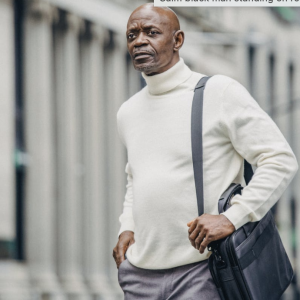Aging Today And Tomorrow: How Will The Pandemic Change Aging Going Forward?

Aging Today And Tomorrow: How Will The Pandemic Change Aging Going Forward?
February 3, 2021
If there’s one thing that COVID has revealed, it’s the contradictory nature of aging at this moment in time. Never have the words of Dickens, “It was the best of times, it was the worst of times” rung more true. For many seniors, the pandemic has truly been a horror show- between the risk of severe illness and death, the loneliness and social isolation, the economic downturn, and the revelations of the awful conditions inside long-term care facilities. Even younger people feel like they’ve aged 6 years in the last 6 months due to the stressors of the pandemic. So you can only imagine (or maybe you already know) how it has felt to be an older adult during this time. Yet at the same time, today’s older adults are “physically younger” than previous generations, and there are all sorts of technological innovations and changing attitudes that have allowed seniors to break out of stereotypes to lead interesting and engaged lives. It’s a paradox for sure.
The question then becomes how will the experience of aging change post-pandemic? Will the lessons from COVID create more supported and expansive lives for older adults or will apprehension about risks and resources lead to further limitations on the opportunities available? Fortunately, some of our leading experts on aging are beginning to raise concerns and develop outlines about what can be learned from COVID and where improvements can be made, both on the individual and societal level so that older adults have a reason for optimism and opportunity going forward.
For example, writing in Forbes, Bart Astor (author of the book, AARP Roadmap for the Rest of Your Life) posed a series of questions early on in the pandemic that have proved remarkably prescient. For example, he wonders whether younger generations will now worry more about their elders (and will that change their behavior)? Will families think twice about encouraging their older loved ones to enter facilities and instead create living spaces within their own homes or close by? Will there be more supportive services to meet the needs of those aging in place? And will seniors, now with new virtual opportunities for learning and obtaining medical care, further embrace their online options? All good questions that remain to be answered yet resonate with those of us who have tried to keep engaged and connected during these past many months.
As well, Bruce Horovitz, writing in Next Avenue, put forth a set of predictions about what the “new normal” will look like for older adults post-pandemic. Many of his ideas mirror the questions of Bart Astor, but he also ties his insights to many of the new realities we have learned during COVID. For example, he suspects that many of us will continue to take precautions, and limit our exposure to crowds, even if we’ve all been vaccinated. Telemedicine may become more commonplace and travel will likely shift from international to domestic, and by car rather than plane. He suspects we’ll support local small eateries we can trust to keep us safe, and safety and disinfection will become the selling points of all sorts of establishments. Finally, home care will continue to rise as institutional care falls, and families become more involved, and perhaps move closer. And in The Wall Street Journal, writer Anne Tergesen covers a broad array of aging changes she anticipates, as she suspects we will have fewer and better quality facilities while simultaneously shifting incentives and resources to home-based care (also recognizing that keeping older adults segregated, out of sight of the rest of the community, fosters aging stereotypes and deprives society of the valuable insights that older people possess). She also anticipates there will be more planning (for retirement as well as for the end of life) as the pandemic has freed so many of us to reflect on what’s important in life.
Experts from The Stanford University Longevity Center and The Milken Institute Center for the Future of Aging have also contributed to this conversation in the wake of our collective COVID insights. At the Milken Institute, a broad range of experts have held public conversations on such diverse topics as housing, employment, intergenerational connection, and reconsidered paths to wellness and medical care, all pushing the boundaries of how COVID has reconfigured how we will age going forward. And at Stanford, a project entitled “A New Map of Life: After the Pandemic” urges us as individuals and society to grasp at the lessons learned and seize this momentary opportunity to really reassess what life can look like for older adults in the coming years. And they invite readers to share their own perspectives of the impact and opportunities that have arisen in the wake of COVID. Want to share your thoughts? Put on your thinking cap and click here.







